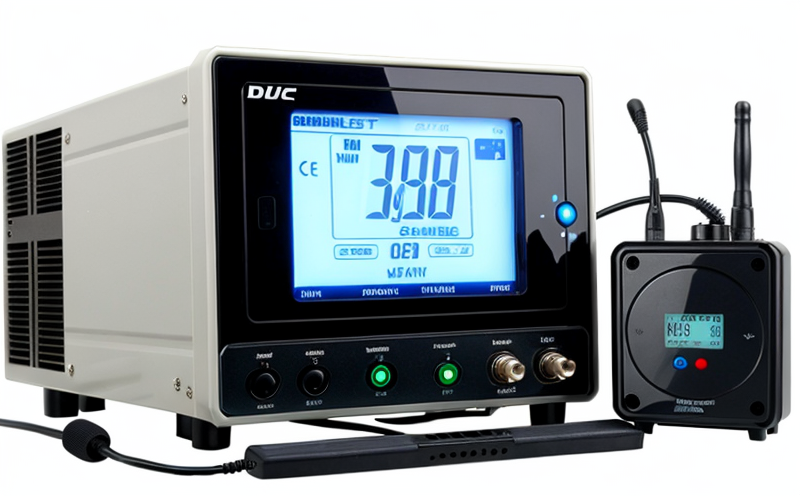RTCA DO 160 Section 20 RF Susceptibility Testing
RTCA/DO-160, titled “Environmental Conditions and Methods of Environmental Testing of Airborne Equipment,” is a critical standard for the aerospace industry. This document provides guidance on how to test equipment for environmental stress, including shock, vibration, temperature, humidity, altitude, salt fog, and electromagnetic interference (EMI). Specifically, Section 20 addresses RF Susceptibility Testing.
RF susceptibility testing is crucial because it ensures that electronic systems can operate reliably in the presence of radio frequency energy. The goal is to ensure that equipment functions correctly even when exposed to high-intensity or high-frequency electromagnetic fields, which could interfere with its performance. This is particularly important for avionics and communication devices used in aircraft.
The standard defines RF susceptibility as the ability of an electronic system to continue performing its intended function without degradation or failure when subjected to specified levels of radio frequency energy from external sources. The test aims at identifying weaknesses in a device’s design that could lead to malfunctioning under real-world conditions, such as interference during flight.
The testing process involves exposing the equipment to controlled RF fields within specific frequency bands and power levels outlined by DO-160. During these tests, engineers monitor parameters including signal strength, noise floor, and modulation depth. After each test run, they assess whether the equipment behaves as expected or exhibits any anomalies.
The primary focus of Section 20 is to evaluate the susceptibility of avionics systems to RF interference from other sources on the aircraft. This includes transmitters, receiver antennas, radar systems, and communication devices. By simulating these real-world scenarios during testing, manufacturers can identify potential issues early in the development cycle.
Accurate and thorough RF susceptibility testing helps prevent costly design modifications later in the production process. It ensures that all components work harmoniously together under challenging electromagnetic environments, thereby enhancing overall system reliability and safety.
In summary, RTCA/DO-160 Section 20 provides stringent requirements for assessing how well electronic systems withstand exposure to RF fields without being adversely affected. Compliance with this standard is essential for manufacturers aiming to produce robust and reliable avionics equipment suitable for commercial aircraft operations.
Industry Applications
| Type of Testing | Description |
|---|---|
| Transmitter Interference Test | This test evaluates the impact of interference from nearby transmitters on a receiver’s performance. It ensures that any signals generated by other devices do not disrupt communication or cause errors in data transmission. |
| Radar Cross-Interference Test | Here, the interaction between different radar systems is examined to ensure one system does not affect another negatively. This prevents false alarms and miscommunication among aircraft during flight. |
| Communication Device Interference Test | This assesses how well various communication devices coexist within a confined space like an aircraft cabin. It checks for signal crosstalk that might degrade voice quality or video clarity. |
The above table outlines some key applications of RF susceptibility testing as per RTCA/DO-160 Section 20. Each type of test plays a vital role in ensuring safe and efficient operation of electronic systems aboard aircraft.
Why Choose This Test
The decision to conduct RTCA DO-160 Section 20 RF Susceptibility Testing is driven by several factors:
- Regulatory Compliance: Many countries require adherence to international standards like RTCA/DO-160 when certifying avionics equipment for use in commercial aircraft.
- Risk Mitigation: By identifying and addressing RF susceptibility issues early, manufacturers can avoid costly recalls post-market entry.
- Enhanced Reliability: Ensuring robust performance across all environmental conditions improves the overall reliability of avionics systems.
- Innovation Support: Advanced testing methods help push technological boundaries while maintaining safety standards.
Besides meeting regulatory requirements, choosing this type of test also enhances brand reputation and customer trust. Reliable products are more likely to gain market acceptance quickly, leading to increased sales and profitability for manufacturers.
Environmental and Sustainability Contributions
- Eco-Friendly Design: By conducting thorough RF susceptibility tests early in the design phase, engineers can eliminate unnecessary components that add weight or power consumption, thus promoting lightweight designs.
- Sustainable Operations: Ensuring reliable performance minimizes downtime and reduces the need for frequent maintenance checks, contributing to more efficient operations over time.
- Lifetime Cost Savings: Identifying and correcting RF susceptibility issues upfront results in lower lifecycle costs through reduced repair expenses and extended product longevity.
These contributions highlight how RTCA DO-160 Section 20 plays a crucial role not only in compliance but also in fostering sustainable practices within the aerospace industry.





